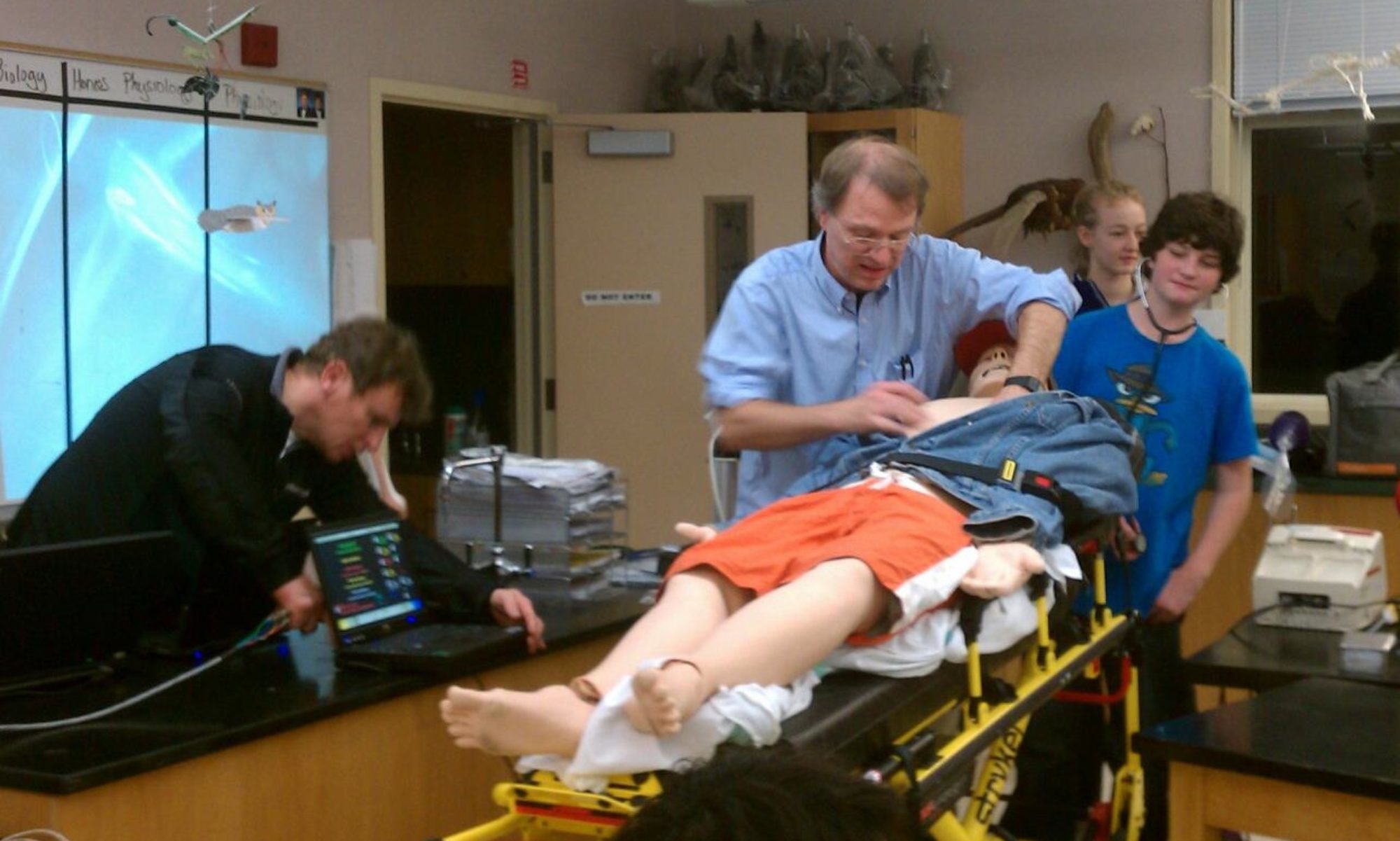An Interview With Prominent Hydrologist: Rachel Z Kamman
Interview by Julia McKeag, Terra Linda High School
How we Know What we Know about the Brain
 |
| fMRI Machine |
 |
| fMRI Brain Scan |
with Beate Heinemann, Ph.D.
Marin Science Seminar Presentation: “The Large Hadron Collider: What it is and what we have Learned from it so far” Watch the protons fly as Dr. Heinemann returns to tell us the latest on CERN’s Large Hadron Collider and the ATLAS project. Download the flyer here, (November 16, 2011, 7:30-8:30 pm, Terra Linda HS, Room 207, San Rafael, CA)
“The field of “particle physics” tries to understand the physics of the most fundamental building blocks of matter. How many such building blocks are there? How do they relate to each other? Why are they there? Currently we do not have a good theory why we have any mass at all, even though of course we know that all matter has a mass. There are, however, many theories about why this might be and the goal of my experiment is to prove or disprove them, or to maybe find completely unexpected phenomena that will then need to be explained. One exciting possibility is that we find extra dimensions of space that could even result in the production of mini-blackholes. My experiment is called ATLAS and is situated at the “Large Hadron Collider” (abbreviated as LHC) that is located in Switzerland. There are more than 2000 physicists on my experiment, and many engineers and technicians: all of them collaborate with each other to answer some of the most basic and fundamental questions of Science today. In my talk I will describe how this experiment works and what we hope to discover there.”
Dr. Heinemann is Associate Professor of Physics at UC-Berkeley.
SPOOKY Physiology & Embryology this October at MSS!
![]()
 |
|
| Dr. Rich Schneider, Man of Mystery |
Dr. Schneider will overview experiments in his laboratory that have revealed molecular and cellular processes involved in facial patterning. He will describe how his studies to understand the basis for skull shape in breeds of dogs led him to create a cell transplant system whereby duck embryos develop with quail beaks. He will bring an assortment of skulls. Get the flyer here. (October, 2009; October 19, 2011)
 |
| Photo by Vania Coelho |
“Homeless Nemo: What Does the Future Hold for Coral Reef Communities?”
Coral reefs are undoubtedly among the most threatened ecosystems in the world. Studies predict that without increased conservation and restoration efforts a complete collapse is only a few decades away. This talk will focus on the current status of coral reefs around the world, including threats to them and the consequences of those threats. (4/30/08, 9/29/10, October 5, 2011) Get the flyer here.
Dr. Coelho holds degrees in Biology, Ecology and Zoology and she completed doctoral research while working as a visiting scientist at the National Museum of Natural History, Smithsonian Institution. After completing her doctorate she held research scientist positions at Columbia University. Dr. Coelho’s research focuses on the ecology and evolutionary biology of marine invertebrates including benthic community ecology, population biology, behavior, systematics of crustaceans, and coral reef ecology. She is currently Associate Professor of Biology at Dominican University.
Sea Cucumbers Invade TLHS!
Wed. January 26, 2011
“Life in the Slow Lane – Peristaltic Locomotion in Sea Cucumbers” How exactly do soft-bodied animals get around? This talk combines results from projects investigating locomotion in four species of sea cucumbers (Echinoderms). Professor Spain will talk about peristaltic locomotion being used to crawl and burrow into sand. She will also give an overview of results on the kinematics analysis of crawling across sand. These include variables like stride distance, stride length, and crawling velocity. Crawl on over and check it out! Download the flyer. (January 26, 2011)
Dr. Spain is Assistant Professor of Biology at Dominican University, San Rafael. She earned her B.S. in Biology Education from North Carolina Agricultural and Technical State University and her Ph.D. in Biology from the University of North Carolina at Chapel Hill. Currently, her research focuses on the functional morphology and locomotion of invertebrates
Physics for Future Presidents
with Professor Richard Muller of UC Berkeley
Wednesday, November 10, 2010 7:30 – 8:30 pm
Terra Linda High School, San Rafael, Room 207
Health News – Beta blockers reduce risk of death after surgery, study finds
Homeless Nemo: What Does the Future Hold for Coral Reef Communities?
Homeless Nemo: What Does the Future Hold for Coral Reef Communities?
with Vania Coelho, Ph.D. of Dominican University, San Rafael, CA
Coral reefs are undoubtedly among the most threatened ecosystems in the world. Studies predict that without increased conservation and restoration efforts a complete collapse is only a few decades away. This talk will focus on the current status of coral reefs around the world, including threats to them and the consequences of those threats. (April 30, 2008; September 29, 2010) Get the flyer here.
Dr. Coelho holds degrees in Biology, Ecology and Zoology and she completed doctoral research while working as a visiting scientist at the National Museum of Natural History, Smithsonian Institution. After completing her doctorate she held research scientist positions at Columbia University. Dr. Coelho’s research focuses on the ecology and evolutionary biology of marine invertebrates including benthic community ecology, population biology, behavior, systematics of crustaceans, and coral reef ecology. She is currently Associate Professor of Biology at Dominican University.









